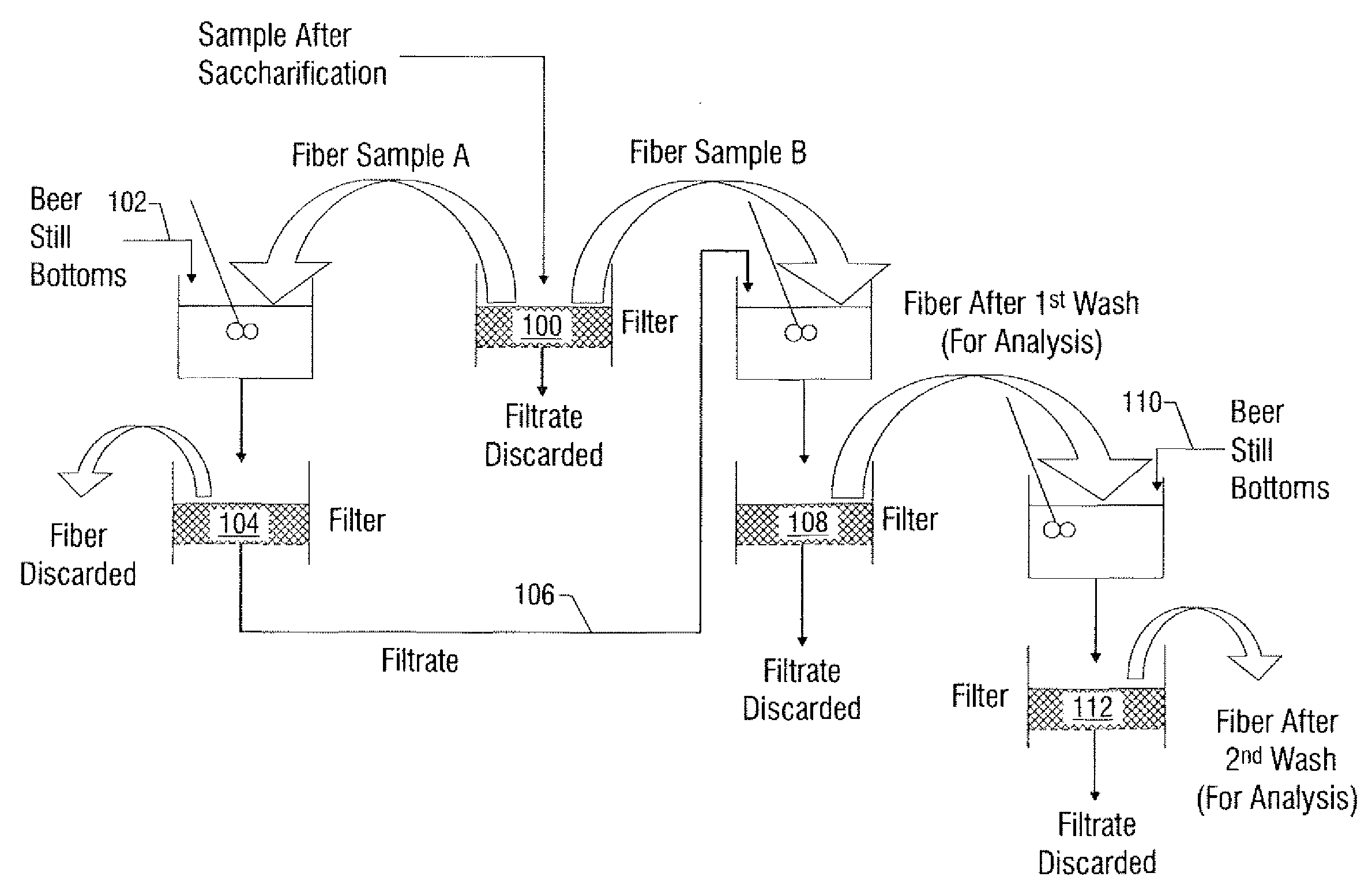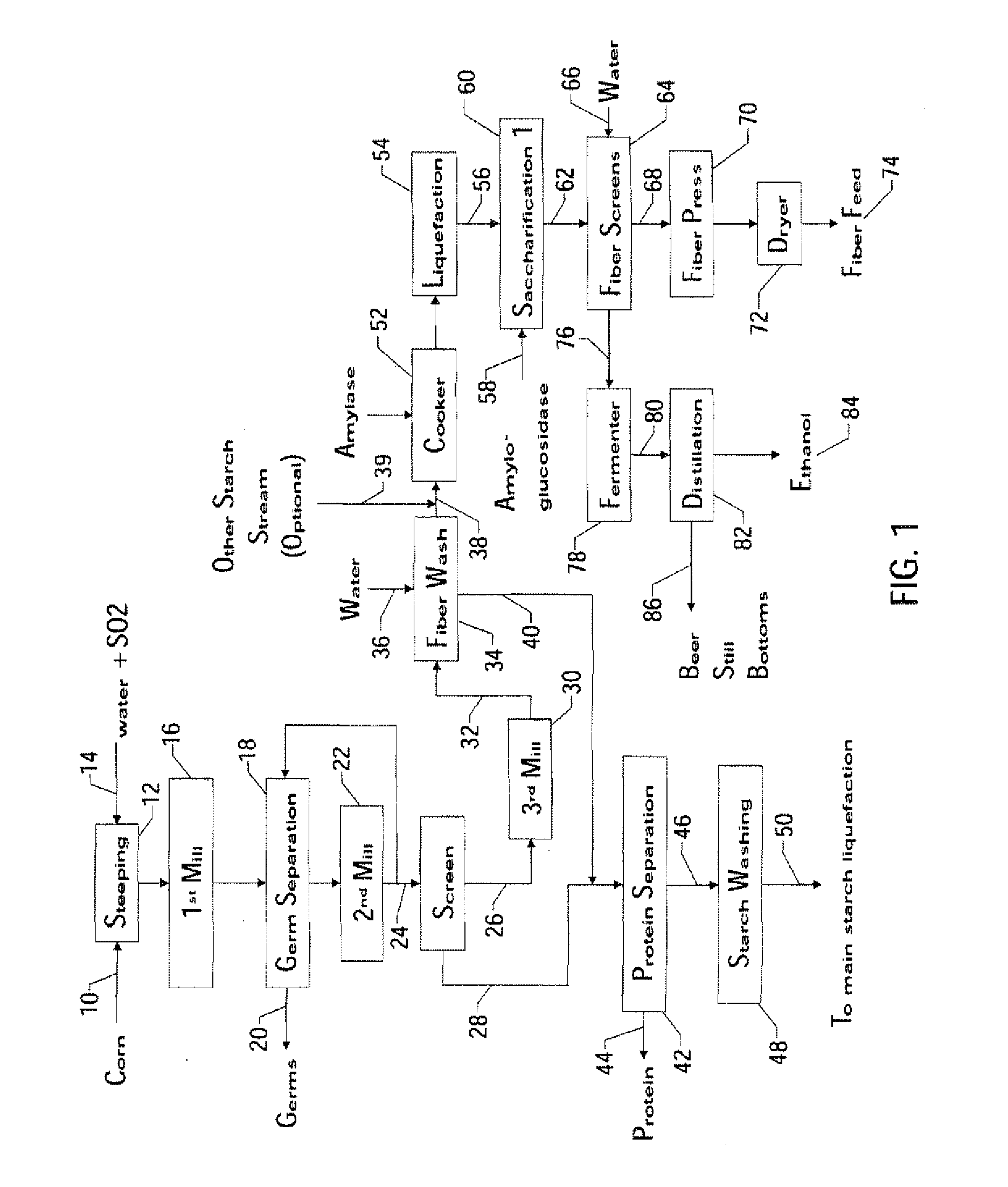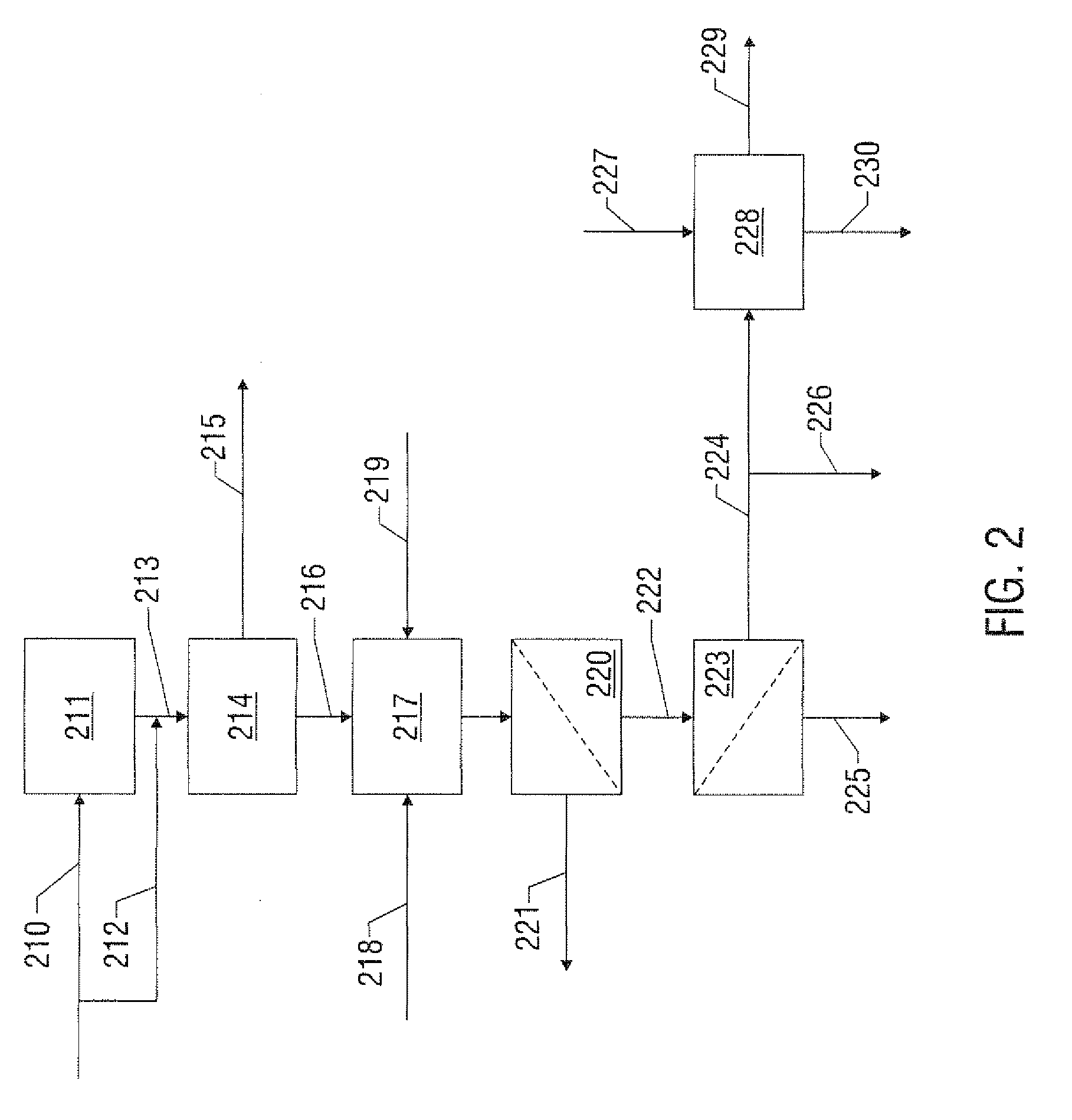Corn Wet Milling Process
a wet milling and corn technology, applied in the field of wet milling process, can solve the problems of loss of starch with the fiber product, loss of yield of starch that can potentially be converted to dextrose, and the number of screens and the volume, so as to enhance the proportion of insoluble protein in the beer still bottom
- Summary
- Abstract
- Description
- Claims
- Application Information
AI Technical Summary
Benefits of technology
Problems solved by technology
Method used
Image
Examples
example 1
[0048]530 g of fiber from the third fiber wash screen after the third mill were collected from a corn wet mill. This fiber material had a dry solids concentration of 25%. To this were added two liquid streams, again from the corn wet mill. The first of these were 205 g of light steep water containing mainly ash and soluble protein with a dry solids concentration of 12%. The second was 265 g of primary centrifuge underflow, which is primarily starch and has a dry solids concentration of 40%. The primary centrifuge underflow was added to make the test representative in relation to the way a plant would be run. More starch than was present in the fiber may be required for fermentation to ethanol, and the steep water was added to bring the dry solids to about 27%.
[0049]Potassium hydroxide was added to reach pH 5.6, and 1.25 g of Liquizyme Supra was added. This is an alpha-amylase enzyme supplied by Novozymes. The sample was mixed well and then split into two equal samples of 500 g each....
example 2
[0056]A process of the present invention was used in a pilot plant with European corn, and the following product streams were analyzed: a wet fiber stream (corresponding to stream 68 in FIG. 1), a dry fiber stream (corresponding to stream 74 in FIG. 1), and a beer still bottoms permeate (corresponding to stream 225 in FIG. 2). Table 2 below summarizes the analyses.
TABLE 2StreamDSProteinAshSugarsFatWet fibers37.7%12.3%1.0%NA7.0%Dry fibers93.9%13.7%1.4%NA8.7%Beer still3.9%12.9%31.1%3.3%0.5%bottomspermeateDS is dry solids. Protein, ash, sugars, and fat are quoted as a % on dry solids. NA = Not available.
PUM
| Property | Measurement | Unit |
|---|---|---|
| Fraction | aaaaa | aaaaa |
| Fraction | aaaaa | aaaaa |
| Fraction | aaaaa | aaaaa |
Abstract
Description
Claims
Application Information
 Login to View More
Login to View More - R&D
- Intellectual Property
- Life Sciences
- Materials
- Tech Scout
- Unparalleled Data Quality
- Higher Quality Content
- 60% Fewer Hallucinations
Browse by: Latest US Patents, China's latest patents, Technical Efficacy Thesaurus, Application Domain, Technology Topic, Popular Technical Reports.
© 2025 PatSnap. All rights reserved.Legal|Privacy policy|Modern Slavery Act Transparency Statement|Sitemap|About US| Contact US: help@patsnap.com



